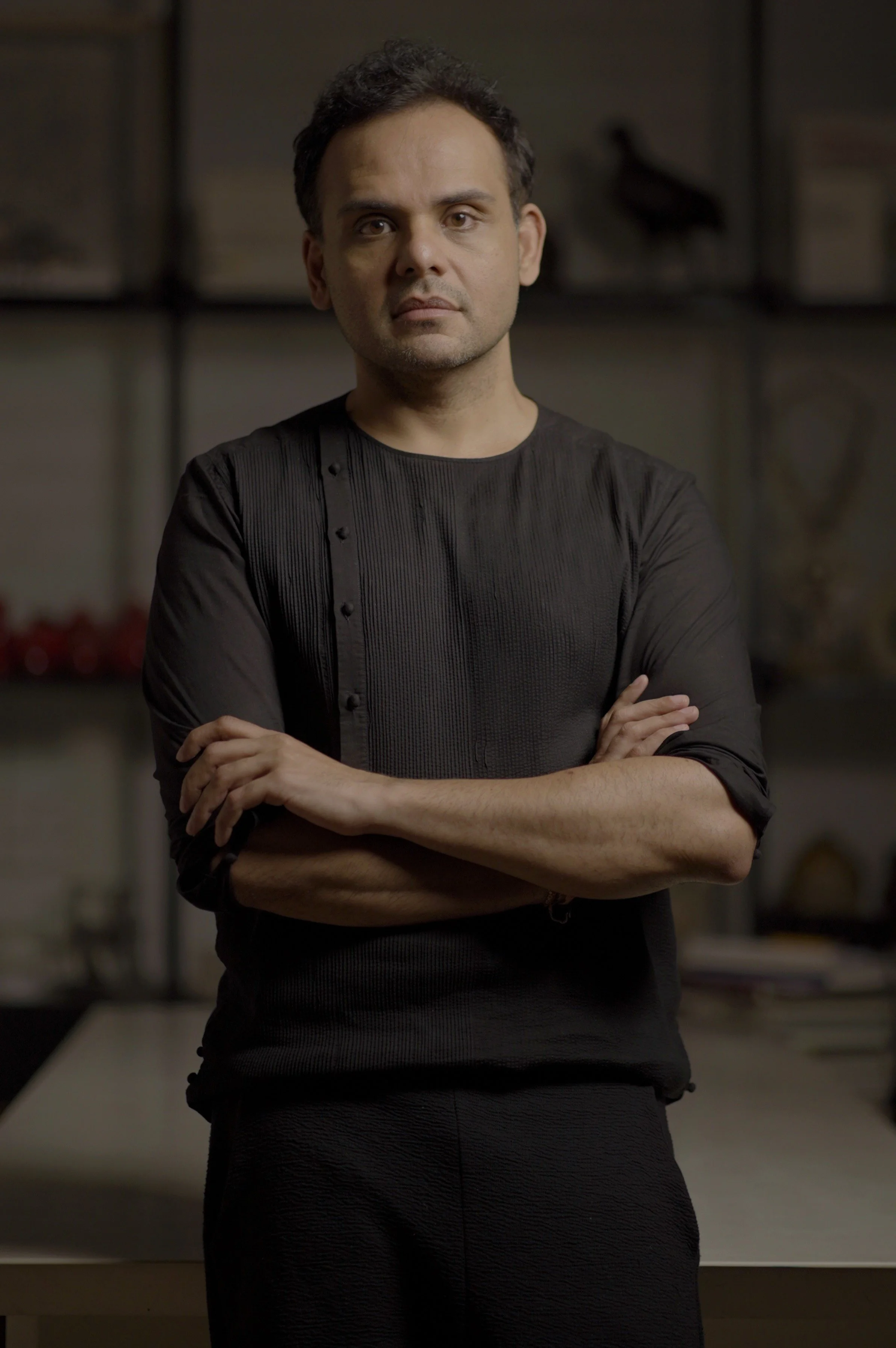In Conversation with: Ashiesh Shah
Recognised as one of India’s most influential interior architects, Asheish Shah has carved out a distinct language of design, one that balances modernism with tradition, and restraint with richness. With an aesthetic rooted in Wabi-Sabi philosophy and a deep reverence for Indian craftsmanship, Shah’s work transcends trends to create spaces that are quietly powerful and deeply personal.
Photography: Kashyap Vyas
From his celebrated residential projects to collectable design pieces under his label Asheish Shah Studio, his approach is guided by emotion, material integrity, and an unwavering commitment to storytelling through form and function. In this exclusive conversation, Shah shares insight into his creative process, his early influences, and the philosophy that continues to shape his ever-evolving body of work.
Your practice draws deeply from the philosophy of Wabi-Sabi. How has this idea of beauty in imperfection shaped your approach to both architecture and interior design over time?
Wabi-Sabi has always resonated with me—it’s about embracing the imperfect, the transient, the quietly profound. Over time, this philosophy has shaped not just the way I design, but the way I see. I’ve grown to appreciate materials that age, spaces that evolve, and details that don’t scream for attention. There’s a kind of emotional honesty in that, and it’s something I try to bring into every project.
From penthouses to concept stores, your work strikes a balance between scale and intimacy. How do you maintain a strong personal narrative across such diverse project types?
For me, it always starts with the story. Whether it’s a sprawling home or a compact retail space, I’m looking for that emotional core. Who is it for? What do they feel when they walk in? I think that’s how you preserve intimacy—even on a larger scale—by designing with feeling, not just function. The narrative becomes the thread that connects everything else.
You’ve designed homes for some of India’s most celebrated names. How do you balance their personalities with your own design language—and what does collaboration look like in those moments?
Designing for well-known personalities is always a balance between listening and leading. It’s important to understand who they are, how they live, and what feels authentic to them—but also to maintain a clear design point of view. The best collaborations are when there’s mutual respect. I come in not just as a designer, but as someone helping translate their identity into space.
Geometry and materiality are central to your aesthetic. Do you begin a project with form in mind, or does material lead the way?
It’s usually the material that leads. I’m fascinated by how a material behaves, how it feels in your hand, how it changes with time. Form comes from that—it’s shaped by the properties of the material, by the way, it wants to exist in space. There’s a dialogue between the two, but material has always been the more intuitive starting point for me.
The transition from interiors to product design feels seamless in your work. What was the catalyst for launching your Atelier, and how does it continue to evolve?
The Atelier came from a need to go deeper—to explore design at a more tactile, intimate level. It started as a space to experiment, to work with artisans, to blur the line between art and design. What’s exciting is that it’s always evolving. Every collaboration, every new material or technique we try, pushes us in new directions.
Wabi-Sabi embraces the impermanent and the incomplete. How do you reconcile that philosophy with the often exacting expectations of high-end clients and luxury spaces?
I think we’re redefining what luxury means. It’s no longer about gloss or perfection—it’s about depth, craft, meaning. I try to guide clients toward that understanding. That a wall with texture, or a hand-formed object, can have more soul than something flawless. When people feel that emotional connection, they begin to see imperfection as a kind of beauty.
Your Atelier is described as a space of experimentation and storytelling. Can you share a piece or collaboration that felt especially meaningful or surprising to you?
The STAMBH series really stayed with me. It was inspired by temple pillars—symbols of strength and silence—and working with stone artisans on that brought a kind of sacred energy to the process. What surprised me was how much the piece spoke beyond design—it became something contemplative, almost meditative.
Craftsmanship is clearly at the heart of your work. In a world increasingly leaning toward speed and scale, how do you preserve slowness and intention in your process?
It’s a conscious choice to slow down. I work closely with artisans who understand that rhythm, who aren’t rushing to finish but are focused on doing it right. There’s beauty in taking your time, in letting things evolve. That slowness becomes part of the design—it’s embedded in the texture, in the feel, in the story.
How does your approach shift when designing for residential versus commercial or hospitality spaces? Is there a common thread that runs through them all?
Each space has its own pulse—residential projects are more personal, more reflective, while hospitality or commercial work is about creating shared experiences. But the common thread is always emotion. I want people to feel something, whether they’re walking into a home or a gallery or a concept store. That emotional resonance is key.
As someone shaping India’s design landscape and reaching far beyond, what story do you hope your body of work will tell in the years to come?
I hope it tells a story of quiet conviction. Of how Indian craftsmanship can be contemporary, how tradition and innovation can sit side by side. I want the work to feel timeless—not because it avoids change, but because it embraces it. If it leaves people feeling something real, something grounded, then I think I’ve done my job.







